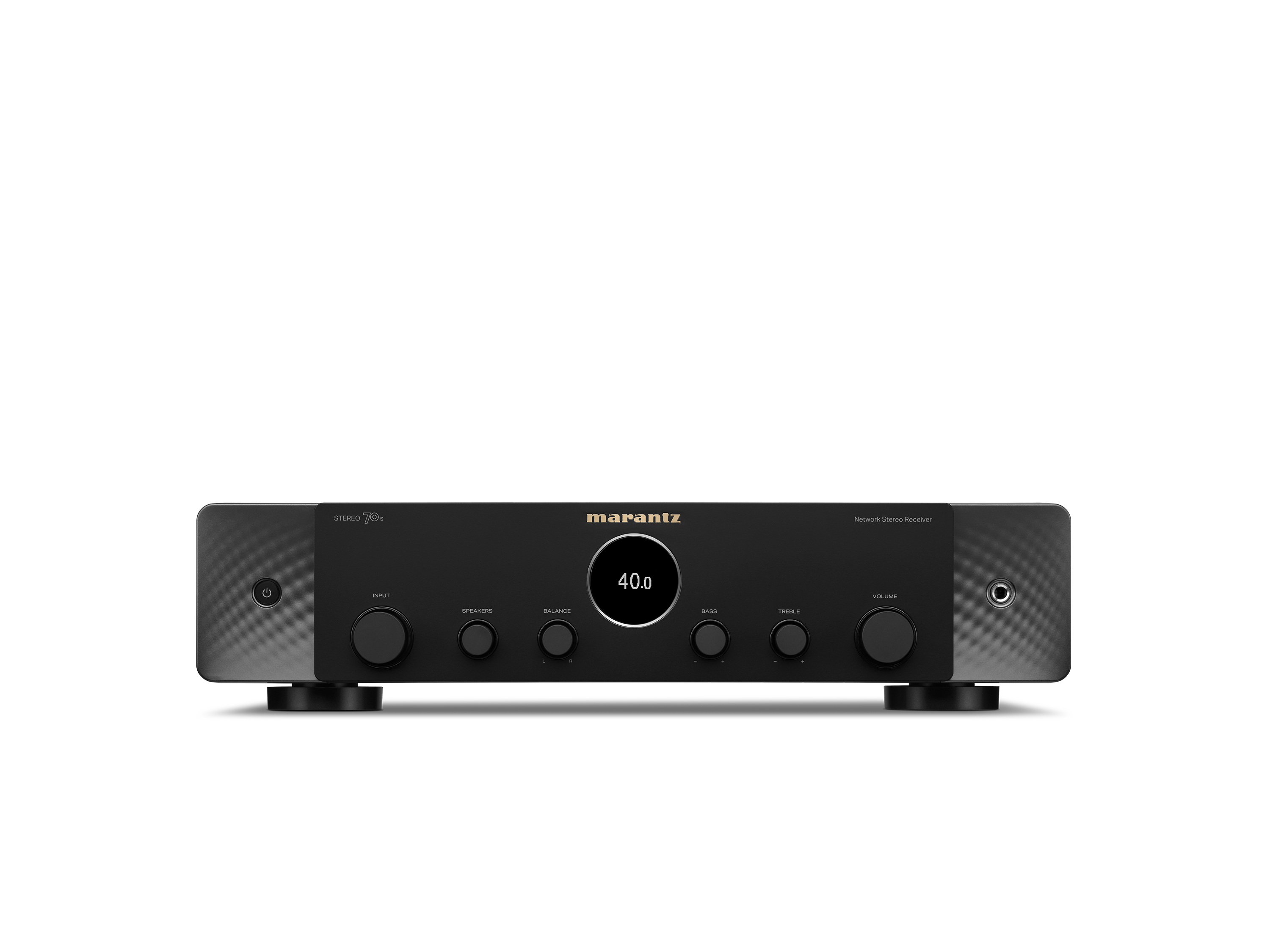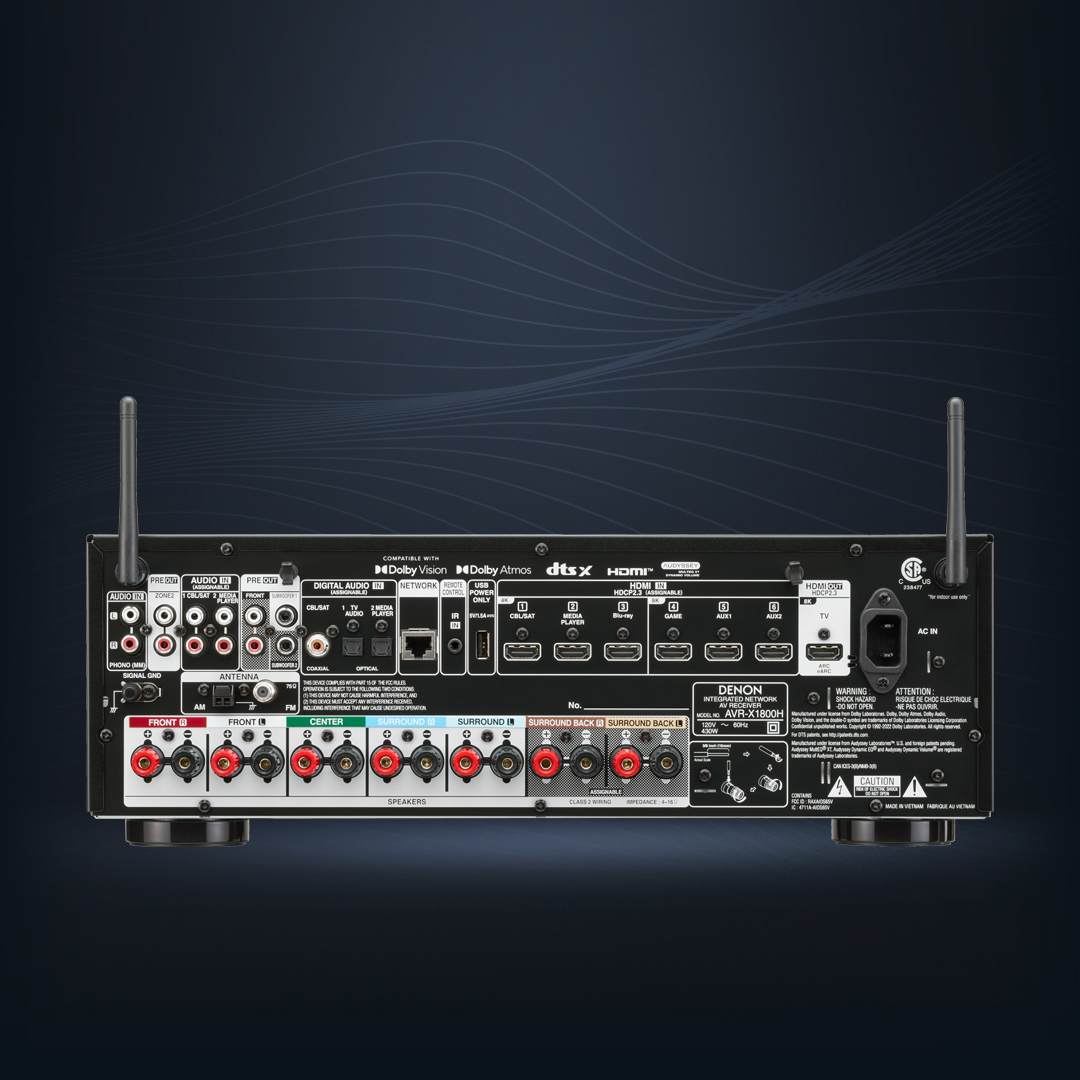This is a review and detailed measurements of the Marantz Cinema 70s home theater Audio/Video Receiver (AVR). It was kindly drop shipped by a member and costs US $1,200.
View attachment 333466
The 70s sports the new industrial design of Marantz AV products which I very much like. It looks even more attractive in this slim package. The display is not very informative but I can see it fitting the style now better than it ever did. Back panel shows a simpler layout which again, I prefer:
View attachment 333467
Many of us want a compact setup to go with our flat panel TVs or alternatively serve as our main music and TV/video sound and this is all we need really.
I updated the 70s to latest firmware which took about 10 minutes but otherwise was effortless.
Marantz Cinema 70s DAC/Pre-out Measurements
As usual we start with pre-out to determine the fidelity of digital to analog conversion. Per testing of prior Denon/Marantz products I set the volume to 82.5 and managed to nicely get the 2 volt output using HDMI as a source: (all testing with the output set to "Pre-out")
View attachment 333468
I was really hoping to see noise+distortion as expressed in SINAD to be north of 100 dB but it was not meant to be. I did try Toslink to see if that is any better:
View attachment 333470
The "grass" in the FFT noise floor improves but SINAD remains the same. Going with what we have, the 70s lands in not so good ranking:
View attachment 333471
Sweeping the input levels shows that optimal performance is at lower voltage although you don't gain much:
View attachment 333472
Multitone is at lower level so benefits from above factor:
View attachment 333473
IMD sweep though shows that more optimizations should have been done in noise and distortion front:
View attachment 333474
For comparisons to measurements elsewhere, here is 50 Hz response:
View attachment 333475
There is no filter selection so I was worried that we would see the very slow one from previous generation Marantz products. Fortunately they have adopted a more proper one:
View attachment 333476
Out of band attenuation is very modest though which will cause pain in the wideband THD+N measurements below. Frequency response shows the appropriateness of the filter in that domain:
View attachment 333477
Here is what I talked about:
View attachment 333478
Analyzing the spectrum of a 1 kHz tone shows that the ultrasonic energy is indeed the problem:
View attachment 333576
The unit is susceptible to audio samples when it comes to jitter:
View attachment 333480
Linearity is not great although better than some other AV products:
View attachment 333481
Not a lot to celebrate here although if you look at the
review of Marantz NR1510, you will see that it has much rougher results even though top numbers are close.
Marantz Cinema 70s Amplifier Measurements
When I test an amplifier, I first let it warm up at 5 watts into 2 channels of a 4 ohm load. I show this at the end usually since it usually is not eventful. That was not the case here:
View attachment 333482
I left the amp running for a bit and was very surprised when I looked and saw that jump in distortion around 2 minutes. It also has this odd behavior in that every time you send it audio, distortion is higher and then settles down after about 7 seconds. While the amp was warm I don't expect the amplifier to go into any kind of mode to protect itself with just 10 watts of output. Note that I had ECO mode turned off (double checked). Performance before this effect clicked in was already poor. Giving up another 10 dB is just a sin. Here is the same issue in the dashboard:
View attachment 333489
After a minute or two you get this:
View attachment 333490
As noted, once the AVR goes into this mode, you can't get out of it unless you power cycle the amp. Simply turned down the volume, stopping the source, etc. won't make a difference. I almost stopped here as this is just unacceptable. As a minimum it should be documented. But then I considered that the company doesn't seem to be making claims about 4 ohm ability (lowest power rating is at 6 ohm) so I decided to continue and used the better SINAD value in the rankings:
View attachment 333491
If I use the lower number, it would literally fall of the right side of the chart!
Here is an FFT of before and after warm up:
View attachment 333502
FYI I could not replicate the issue at 1 and 2 watts.
Back to the dashboard, I also tested with analog input:
View attachment 333492
Performance is essentially the same so I continued testing with that as that makes comparison to stand-alone amplifiers easier. But I did confirm that in Pure Direct mode, the input is NOT digitized:
View attachment 333493
I set the crossover to 80 Hz and there, if you don't go to Pure Direct, you not only get that crossover, but output gets limited to which indicates it is going through an ADC. Nice to see even in that condition the bandwidth is large seeing how you have output to almost 48 kHz making me think sampling rate of the ADC is 88/96 kHz.
Noise performance is not great at 5 watts but improves at full power:
View attachment 333494
Note that you lose some of this with EQ so we really need better performance.
Multiutone shows the busy grass indicating a lot of intermodulation distortion:
View attachment 333495
Same with 19+20 kHz tones:
View attachment 333497
Crosstalk could definitely be better:
View attachment 333499
We see the distortion kink in the power measurements:
View attachment 333500
Good headroom though since I am only testing two channels and there is power supply capacity for more:
View attachment 333501
Here is the 8 ohm sweep:
View attachment 333503
We beat the spec by 15%.
Sweeping frequencies doesn't impact the overall response but the "hump" behavior changes:
View attachment 333504
FYI sweeping at higher levels caused the AVR to go into protection and would not recover on its own, requiring power cycle. Gave me a scare thinking it was damaged for good!
Conclusions
On the heels of the
Marantz AV10 processor review, I had my hopes high for excellent performance but that was dashed with the Cinema 70s. While there seems to be some improvement compared to prior generation, the overall picture doesn't change. DAC performance is just "OK" and amplifier rather poor. Once price goes north of $1,000 I expect better performance. The good looks are there but sadly, the rest is not.
I can't recommend the Marantz Cinema 70s. Company can and should do better.
------------
As always, questions, comments, recommendations, etc. are welcome.
Any
donations are much appreciated using
: https://www.audiosciencereview.com/forum/index.php?threads/how-to-support-audio-science-review.8150/





